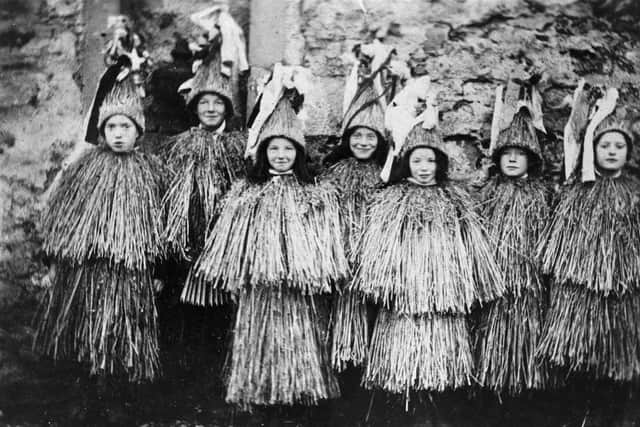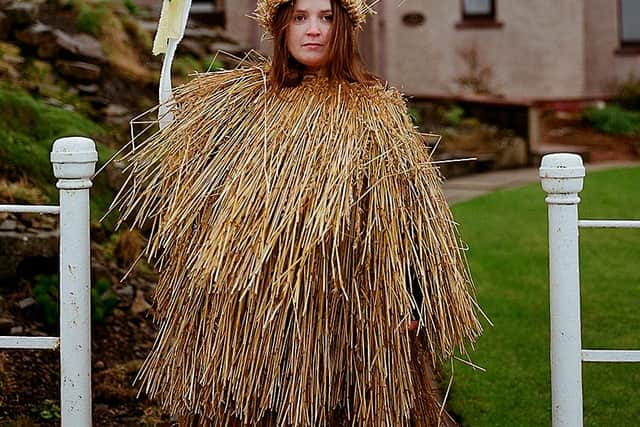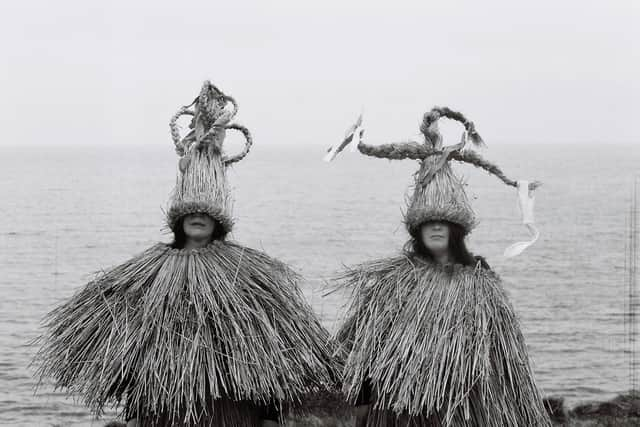Halloween Scotland: What is skekling? The 'unsettling' island tradition in Shetland linked to Norse history
What is skekling?
The tradition of skekling was observed in Shetland for hundreds of years, with its roots in the Norse history of the islands.
Skeklers dressed in a straw skirt – called a gloy – a short, straw cloak and tall pointed straw hat, with the costumes woven together using family crops.
Advertisement
Hide AdAdvertisement
Hide AdSkekling was a Pagan custom when people hoped their rituals would bring the sun back from the grip of winter and ensure good crops, according to an account of the custom.


Who did the skeklers visit and when did they appear?
For hundreds of years, skeklers went out on Halloween and over Yule, with weddings on Shetland sometimes treated to a visit.
Dr Iain Tait, curator at Shetland Museums and Archives, said: “Visually the skeklers are striking, but when you look into the custom, it is all rather intriguing and unnerving.
“Our cultural link to the skeklers is 100 per cent Scandinavian. It’s very similar to the seasonal masquerade observed in the Faroes.


"The difference is in Shetland, the costumes were made from straw. In the Faroes, it was seaweed.
"The Faroese used a wooden mask, but in Shetland, the face was masked by a cloth.
“Skekling was nothing to do with the Scottish tradition of guising. The tradition was to play out the part of supernatural beings and you didn’t reveal who was in the costumes.
“There was a suspension of disbelief.”


Who takes part in skekling?
Children aged between eight and 15 would most likely take part in the tradition. The leader was called a skudler with the other main character known as the grølek – a type of fearsome, bogeyman character.
Advertisement
Hide AdAdvertisement
Hide AdDr Tait said: "Although the grølek was to be feared, once he appeared in the group, he was not. He was just part of the pantheon of supernatural characters coming into your house.”
Skeklers gathered around the fire, which would normally be in the centre of the room, to dance.
Dr Tait said: “Quite often, the skeklers would carry wooden staves, which they would rap on the floor.
"It was so ritualistic. When they spoke, they disguised their voice. They spoke while breathing in, so it all added to bringing these non-human elements into the home.”
What does food have to do with skekling?
A major element of the skekler custom was the collection of food.
Traditionally, a sheepskin bag called a buggi, that was originally used to hold grain, would be passed around and food dropped in.
"People knew what the skeklers wanted and what the skeklers wanted was cooked meat,” Dr Tait said.
The tradition faded during the 19th century when islanders became more open to British customs and ways.Dr Tait said: "By the 1920s, it was often the case that the costume would not be made in full.”
Advertisement
Hide AdAdvertisement
Hide AdPeople stopped passing around the sheepskin bag and dancing around the fire with the staves.
Does skekling happen on Shetland today?
Skekling was last observed in Shetland on Yell in the 1970s, according to accounts.
Meanwhile, photographer Gemma Dagger recreated the skekler costumes for a photo essay after becoming fascinated with the tradition.
A traditional skekler costume held by Shetland Museum will form part of the Between Islands exhibition, which shares objects across Shetland, Orkney and the Western Isles. The exhibition will launch later this month.
Comments
Want to join the conversation? Please or to comment on this article.